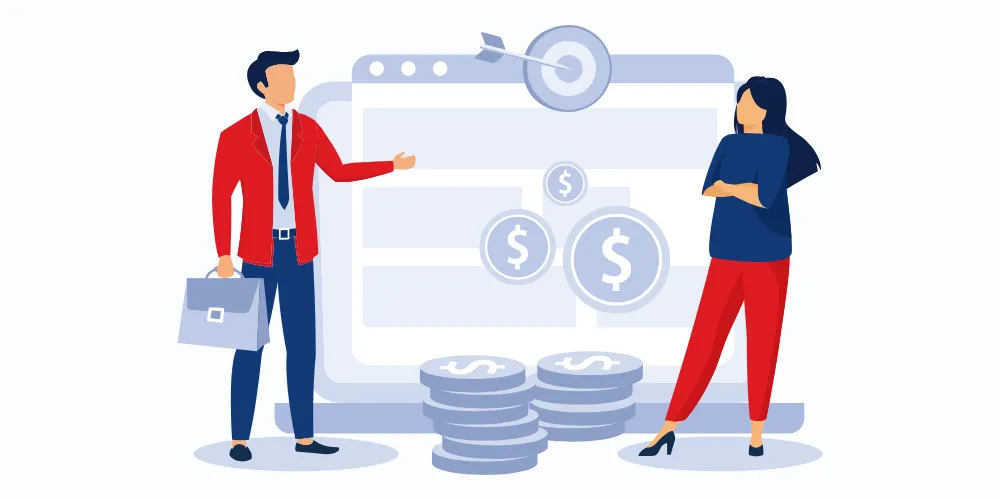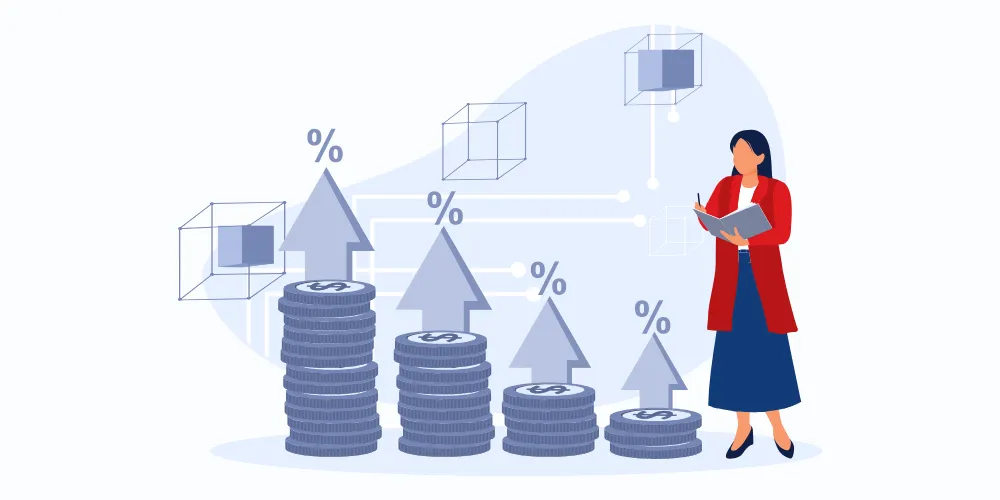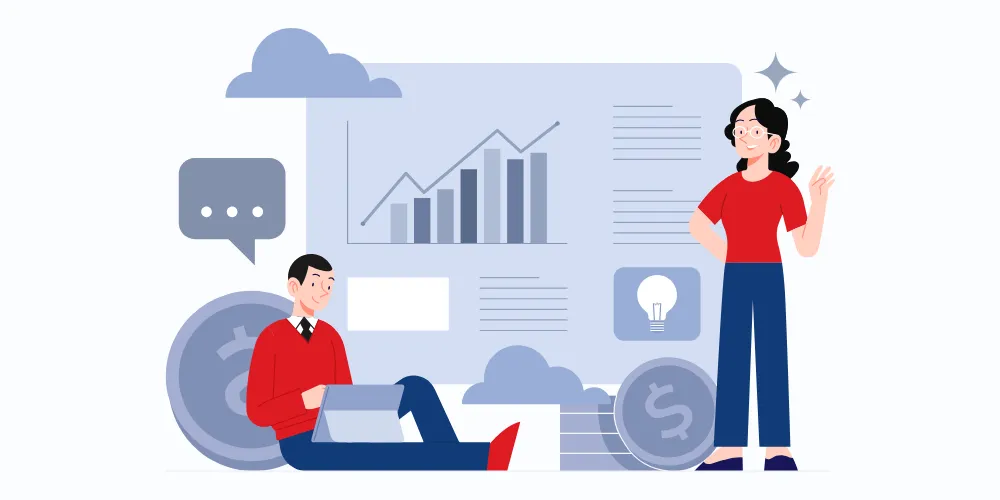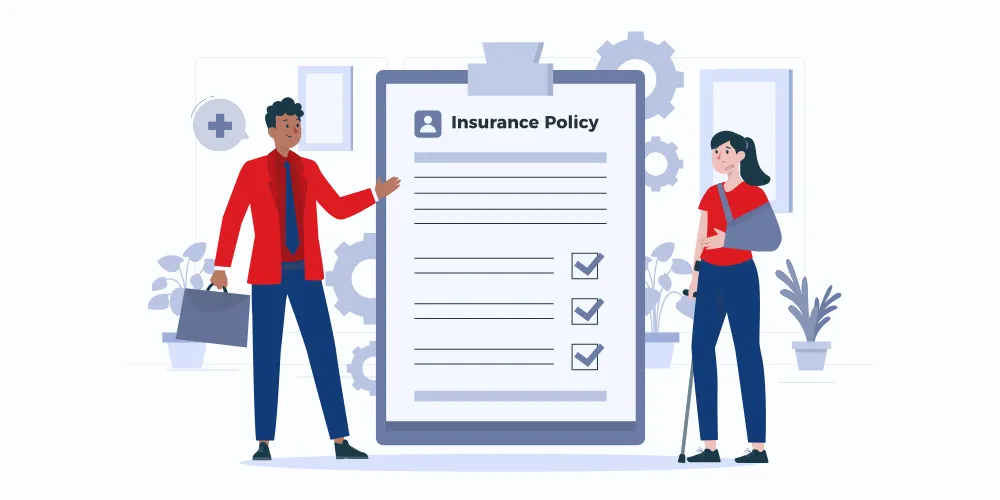A spiff is a unique scheme that awards cash bonuses for exceeding sales targets. Nobody knows where the word originated, but it was first recorded in a slang dictionary in 1859.
What's a SPIFF Program - Definition, Examples, When To Use, Dos and Dont's
- Amit Jain
- Sep 07, 2022
- 4 min read
- Last updated on Jan 28, 2025
What is a SPIFF?
A SPIFF, or Sales Performance Incentive Fund, is a short-term incentive designed to motivate sales teams to focus on specific products or goals. Often offered sales spiff examples are - cash bonuses, rebates, or non-monetary rewards like trips or memberships. SPIFF sales are commonly used by vendors or employers to boost sales, introduce new products, or achieve targeted metrics within a set timeframe. By driving engagement and performance, SPIFF commission programs help accelerate the sales pipeline and align team efforts with business objectives.
What is the difference between a SPIFF, SPIV & Sales Commission?
A SPIFF (Sales Performance Incentive Fund) is a short-term incentive used to motivate sales teams to focus on specific products, goals, or tasks. SPIFFs are often one-time bonuses, offered either in cash, prizes, or experiences, and are typically tied to meeting or exceeding predefined targets in a short period. They are highly motivational and used to drive quick results.
A SPIV (Sales Performance Incentive Variable), while similar to a SPIFF, usually refers to a variable component of a sales rep's pay structure that is more flexible and performance-based over a longer period. SPIVs are often part of a broader incentive program and are adjusted based on performance, rewarding consistent achievement over time rather than short bursts of activity like SPIFFs.
Sales Commission is a more traditional form of compensation where sales reps earn a percentage of the sales they generate. It is typically tied to long-term performance and forms a significant part of a sales rep's overall earnings. Unlike SPIFFs, which are generally given for achieving specific targets, commissions are earned from the sales made and are usually ongoing, based on the value of deals closed. In summary, SPIFFs are short-term and task-specific, SPIVs are performance-based variables, and commissions are regular earnings tied to sales volume.
Different Types of Sales SPIFF
Cash SPIFFs
Cash remains a popular choice due to its instant appeal. Digital prepaid cards are a more secure and efficient alternative, offering quick delivery and online verification while minimizing risks of theft or fraud.
Travel and Entertainment
Offer experiences like weekend getaways, movie tickets, or sports events. These rewards provide a refreshing break from work and are often more memorable than monetary incentives.
Offsite Activities
Plan activities such as spa days or sports outings based on employee preferences. Providing a variety of options ensures inclusivity and greater participation.
Subscription Services
Reward employees with gym memberships, book clubs, or food delivery subscriptions. These perks align with personal interests and encourage work-life balance.
Tiered SPIFFs
Set performance-based tiers with increasing rewards to motivate continuous achievement. This structure incentivizes reps to exceed basic targets for greater rewards.
Mystery SPIFFs
Surprise your team with undisclosed rewards, revealed only upon achievement. The intrigue adds excitement and boosts participation.
Event-Based SPIFFs
Tie incentives to specific events, such as product launches or seasonal promotions, to focus efforts on key business goals.
By diversifying your SPIFF options, you can cater to varied employee preferences and maximize engagement while aligning with organizational objectives.
What are the benefits of SPIFF sales, and when should you use them?
Boost Engagement
SPIFFs help combat employee disengagement by creating a dynamic and competitive work environment that motivates sales reps to stay focused and productive.
Acquire New Accounts
Use SPIFFs to achieve supplementary goals, such as increasing customer signups, without diverting attention from primary objectives like total revenue targets.
Meet Immediate Sales Needs
When sales quotas need to be achieved quickly, a well-designed SPIFF can provide the necessary push to hit or exceed targets in a short timeframe.
Drive Renewals
SPIFFs can encourage sales reps to focus on deal renewals, especially for subscription-based businesses, ensuring customer retention and steady revenue flow during slower periods.
Address Quota Challenges
When quotas are inaccurately set too high, SPIFFs can bridge the gap without permanently lowering expectations, maintaining motivation and fairness.
Support New Launches
SPIFFs can keep new products or services top of mind for sales teams, driving focus on upselling and engaging prospects during launches.
Potential problems with SPIFFs and solutions
While SPIFF programs can drive sales and engagement, they can also present challenges. Addressing these issues is key to maximizing their effectiveness.
Lack of Visibility
Sales reps may lose motivation if they can’t track their progress in real-time. When SPIFF updates are delayed until the promotion ends, sales teams often resort to shadow accounting, wasting valuable time that could be spent closing deals.
Solution: Use intelligent compensation tools that provide instant updates on SPIFF progress. Real-time dashboards allow reps to see where they stand and adjust efforts accordingly, keeping them motivated throughout the program.
Overuse of SPIFFs
Frequent SPIFFs can dilute their impact. When used excessively, they become expected rather than exciting, reducing the motivational boost they provide. Over time, this can lead to disengagement and inflated costs.
Solution: Limit SPIFFs to occasional use—ideally, no more than 12 per year. By introducing them strategically and unpredictably, you can maintain their novelty and effectiveness while keeping costs manageable.
Short-Term Focus
SPIFFs are designed for temporary performance boosts, but over-reliance on them can lead to neglect of long-term strategies and goals.
Solution: Integrate SPIFFs into a broader sales incentive plan that balances short-term wins with long-term growth. This ensures sustained ROI and alignment with strategic objectives.
Addressing these challenges with thoughtful planning and smart tools, SPIFF programs can remain a powerful tool in driving sales success.
How to implement a SPIFF program
Implementing an effective SPIFF program requires clear objectives, strategic planning, and proper execution. Follow these steps to ensure your program drives desired outcomes:
Define Clear Goals
Start by identifying what you aim to achieve through the SPIFF program. Whether it’s boosting sales of a specific product, increasing transaction volume, or introducing a new offering, clarity on your objectives is essential. Clearly communicate these goals to your sales team so they understand what is expected and stay focused on tasks that align with the company’s priorities.
Set Specific and Attainable Targets
Establish measurable targets that act as benchmarks for the program's success. Targets should be realistic and tailored to the desired outcomes. For instance, specify exact sales numbers, revenue goals, or timeframes to ensure everyone understands what constitutes success.
Leverage Data for Customization
Analyze past sales data to identify which types of incentives have been most effective. This insight helps in designing SPIFFs that resonate with your team and align with organizational goals. Use intelligent compensation tools to predict the performance of various incentive structures and refine your strategy.
Tailor Rewards for Impact
A key advantage of SPIFF programs is their flexibility. Customize incentives to suit both individual and team performances. Rewards can range from cash bonuses and rebates to unique experiences like trips or memberships. Choose rewards that motivate your salesforce while aligning with your budget.
Communicate Effectively
Ensure all sales reps are fully informed about the program details, including goals, criteria for earning rewards, and timelines. Transparent communication fosters trust and keeps participants engaged.
Monitor and Evaluate Performance
Track the program's progress in real-time using performance metrics. Intelligent software can help evaluate the success of the SPIFF, offering insights into what works and what can be improved for future programs.
Tips for Implementing SPIFF: Dos and Don'ts
Sales Performance Incentive Fund initiatives can benefit both the business and the workforce. But not every business would implement it in the same way. Planning and research are needed. Setting quantifiable objectives is also necessary. If you comprehend the subsequent elements, you can do it correctly:
1. Do - Understand and Define your Goals
You should be crystal clear about what you need from your sales team and the actual spiff. Once you are aware of your goals, make sure your salespeople are fully aware of them, whatever it is that you want to do. Your reps need to be fully aware of your goals to stay on task and focus on what's best for your company, whether you want to increase sales, complete more transactions, market a new product, or do something else entirely. The target includes an exact, reachable number that can be used as a gauge for how effectively your spiff is doing.
2. Don't - Let the Limited Visibility Limit the Impact of Spiff
Excel spreadsheet management shows how motivating the Sales Performance Incentive Fund is for your sales staff. Reps won't be continuously encouraged to chase the SPIFF if they can't immediately see how they're advancing in that direction. Since spiffs are frequently paid out at the conclusion of a predetermined time, most reps won't learn how much progress they've achieved toward the target until the promotion is finished. A lack of visibility in a Sales Performance Incentive Fund program causes sales staff to waste time developing their own spreadsheets to measure progress (shadow accounting) rather than following leads and closing agreements. When spiffs are included in long-term sales incentive programs, they significantly increase ROI in a dependable, quantifiable manner.
3. Do - Know Your Audience
The ability to quickly customize short-term rewards for both people and organizations is one of their biggest advantages. Use your data to identify the Sales Performance Incentive Fund types that have previously been successful and those that are most likely to succeed going forward. The performance of various spiffs as a component of your entire sales compensation plan can be predicted using intelligent compensation software.
4. Don't - Let SPIFF Disturb Your Budget
Sales Performance Incentive Funds are fantastic for sales in moderation, but there's a reason they may only be used for brief periods of time. Regarding your Sales Performance Incentive Fund success, timing is crucial. These rewards are intended to increase sales temporarily. As a result, they shouldn't be applied continuously to boost performance. If your company uses too many spiffs, the employee engagement they provide may start to fade, and coordination of numerous Sales Performance Incentive Funds may become expensive. The incentives can be employed when sales representatives begin to anticipate receiving spiff at the conclusion of each quarter or year. By rarely introducing spiff so that sellers aren't expecting them, you can keep your plan "gameable." Sales Performance Incentive Fund should be kept uncommon, usually no more than 12 per year.
Ready, Steady, SPIFF!
It's possible that using a spiff program is the standard method of conducting business in the regions you sell to or desire to sell to. Do your research before adopting them. Although generating sales is crucial, are you equipped to set them up and run a spiff properly? In the end, it comes down to ethics and perception more than gains and losses. How do you want your reps to view you, your business, and your other salespeople? You must begin developing a strategy that will assist in aligning goals inside your organization if you want to take full advantage of all the opportunities that a Sales Performance Incentive Fund program can offer. Although motivating sales teams might be challenging, your business can succeed with a little bit of attention.
Frequently Asked Questions
Why is it called a spiff?
Is spiff illegal?
Spiffs are not prohibited in the majority of sales sectors. If they are not applied or used properly, they might cause ethical issues. Spiffs, however, are only regarded as unlawful for government purchases because it is impossible to determine whether the salesman is objective when recommending things to the government.
Is spiff capiatalized or not?
To avoid confusion with the word "spiff," which means to spruce up or clean up, spiff is most frequently written in all caps. To avoid giving the impression that we are shouting spiff at you every minute of your reading, we purposefully chose not to capitalize the word in many instances. We are nice people, aren’t we?
Is there a difference between a spiff and a SPIV?
No, the words spiff, SPIV, and Sales Performance Incentive Fundall refer to the same class of sales incentive programs.




